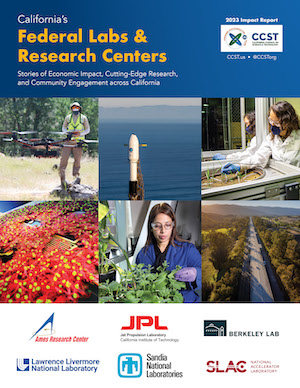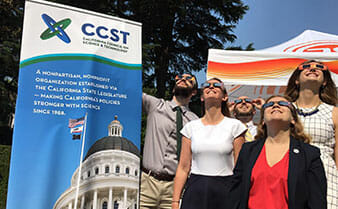2023 Impact Report
California's Federal Labs & Research Centers
Six federal laboratories and science centers in California have formal partnerships with CCST – the State’s premier resource to connect decision makers with leading scientists in California and beyond – as Federal Laboratory Partners. This Impact Report offers a glimpse of the resources and expertise that each lab can offer to California’s decision makers.
Each federal entity boasts a government relations team able to assist local, state, and federal offices. Together with CCST, these liaisons serve as a resource for community members and officials who want to learn more about federal labs and their broader impact for California. CCST helps facilitate links across the capabilities and talents of these labs and centers, and can help Members and Capitol staff navigate the tremendous resources spread across federal labs and science centers in California.
With this report, we invite you to learn how our federal labs and research centers help make California stronger with science and technology.
Dear Fellow Californians:
As the California Council on Science and Technology enters its 35th year of providing science and technology advice to the State, we celebrate the world class ecosystem of education and research institutions that sets us apart. Alongside academic powerhouses such as the University of California, California State University, California Community Colleges, Stanford, Caltech, and the University of Southern California, we also take pride in our unrivalled collection of federal laboratories and research centers.
Federal labs and research centers are set apart from other institutions by bringing to bear large-scale, mission-based projects and facilities on some of humanity’s most pressing and difficult scientific questions. They represent billions of dollars of federal research investment, providing a wealth of knowledge and expertise that California can draw on. These labs take us deep inside the genetic code, support the foundations of our energy and national security, and even launch us toward the stars.
Today, California is at a crossroads. As the State continues to rebuild in the wake of the COVID-19 pandemic, complex and intersecting disasters—including wildfires, climate change, floods and drought—are radically disrupting the ways in which Californians live and work, and threatening catastrophic loss of life and economic impacts. California’s federal labs and research centers are leveraging their world class expertise and technologies—as well as passionate researchers, students, and support staff—to invest in our resilience to disasters.
The unique nature of our federal labs and research centers puts them in an ideal position to pursue research and development in service of the public good. Whether it is developing tools to make our energy grid more resistant to external threats, using satellites to monitor emerging disasters to aid first responders, or deploying new technologies to decarbonize the transportation sector, the breakthroughs developed in these labs continue to benefit millions of Californians every year.
As California continues to move forward and confront big challenges, these labs and centers are ready to help. Here, we invite you to learn about just a few of the many ways that our federal labs and research centers are helping to make California—and the whole nation—more resilient.
Sincerely,
Amber Mace, PhD
CCST
Chief Executive Officer (CEO)
Peter Cowhey, PhD
CCST Board Chair
UC San Diego
Accessing California’s Federal Labs
Why Tap into Federal Science?
Federal agencies such as DOE and NASA are uniquely positioned to contribute to California’s scientific conversation. They leverage the might of federally directed research resources and facilities — bringing mission-oriented research and scientific facilities that complement the wealth of expertise at University of California, California State University, Caltech, Stanford, and other campuses.
Federal research includes many focal areas that can directly inform policy questions at the state level. Federal labs can partner with state agencies and campuses to conduct studies vital for our understanding of natural and physical processes. These federal-state-university partnerships require time for planning and implementation, but they yield collaborations and important knowledge for lifetimes.
Each federal entity boasts a government relations team able to assist local, state, and federal offices. Together with CCST, these liaisons serve as a resource for community members and officials who want to learn more about federal labs and their broader impact for California.
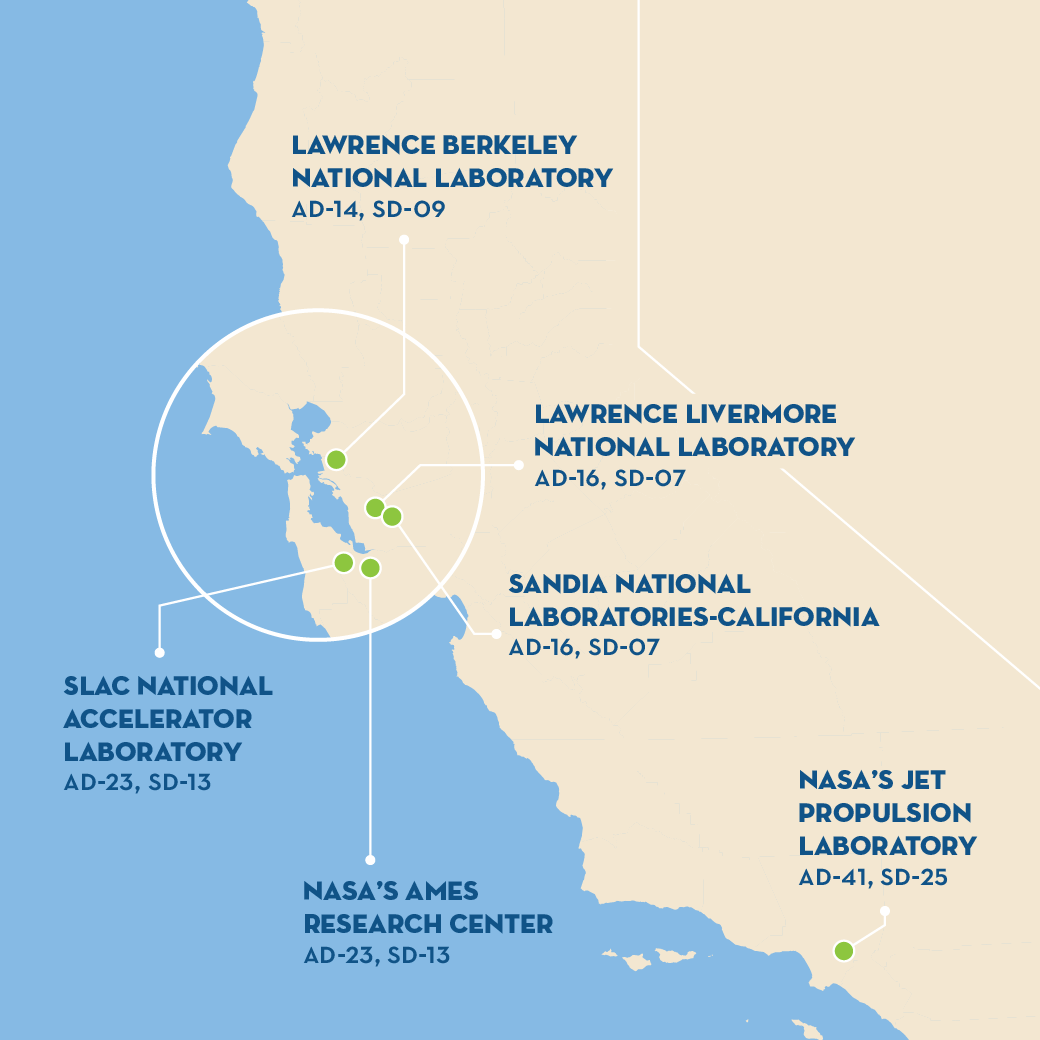
The California Council on Science and Technology (CCST) is a nonpartisan, nonprofit organization established via Assembly Concurrent Resolution 162 in 1988. The resolution directed CCST “to respond to the Governor, the Legislature, and other entities on public policy issues related to science and technology.” To deliver independent advice to state policymakers, CCST engages science and technology (S&T) experts across California’s research enterprise, including through formal partnerships with the University of California (UC), California State University (CSU), California Community Colleges (CCC), Stanford, the California Institute of Technology (Caltech), the University of Southern California (USC) and the six federal laboratory partners described above.
By connecting policymakers with leading scientists in California and beyond, CCST increases policymaker access to S&T advice that is informed by diverse expert perspectives. Over the past three decades, state leaders have requested CCST reports and expert briefings on many issues of policy importance, from natural gas storage safety to sustainable water futures. The connections we facilitate between policymakers and scientists also enhance the ability of our 11 Partner Institutions to transmit S&T information for the public good, including by expanding opportunities for experts to participate in the policy arena and by identifying questions that will drive future research and innovation.
In 2005, there was growing interest by state leaders to improve access to expertise found at federal laboratories and science centers across California and engage them on issues affecting the Golden State.
The call for advice coincided with conversations and coordination already ongoing between CCST and several federal research institutions in California. CCST welcomed six new Partner Institutions.
Of the six institutions, four came from the U.S. Department of Energy: the Lawrence Berkeley National Laboratory, Lawrence Livermore National Laboratory, Sandia National Laboratories, and SLAC National Accelerator Laboratory; and two came from NASA: the Jet Propulsion Laboratory and the Ames Research Center.
In 2020, in recognition of a need for more agile science and technology advisory frameworks for the state and the increasing threat of natural disasters in California, CCST launched a Disaster Resilience Initiative, focused on increasing the delivery and responsiveness of the science advisory support provided by CCST’s science and technology experts to California policymakers. This five-year public-private partnership convenes diverse, interdisciplinary experts from throughout CCST’s network to address the State’s most urgent disaster resilience advisory needs through a series of needs-finding workshops, briefings to policymakers, advisory meetings, and other engagements.
California’s leadership in technology, environmental stewardship, clean energy, and other critical fields relies on its policymakers having access to clearly communicated, scientifically informed advice. CCST can help Legislators, appointed officials, and Capitol and executive branch staff navigate the tremendous resources spread across federal labs and science centers in California.
CCST’s partnership with its Federal Laboratory Partners has resulted in several high-impact reports, briefings, convenings, and workshops that have delivered timely, nonpartisan, scientific analysis on complex issues. Examples include:
- The Costs of Wildfire in California (2020): This report summarizes the state of knowledge regarding wildfire losses and their associated costs across key sectors. It challenges the assumptions underlying current fire management policies and proposes a novel framework for understanding the total cost of wildfire in California. The report relied on vital input from expertise at Lawrence Berkeley National Laboratory.
- Remote Sensing Technologies and Water Resilience (2021): This Expert Briefing brought together scientists from Lawrence Berkeley National Laboratory, NASA's Ames Research Center and Jet Propulsion Laboratory to discuss the role of satellite based measurements in sustainable groundwater management with members of the Capitol community.
- Building a Resilient Energy Grid to Respond to Escalating Hazards (2022): This scientific session presented at the 2022 Annual Meeting of the American Association for the Advancement of Science (AAAS) took a broad look at the threats facing the energy grid and discussed the qualities that enhance its resilience, as well as the challenges in quantifying a system’s resilience. The panel featured researchers from Lawrence Livermore National Laboratory and SLAC National Accelerator Laboratory.
- Decarbonizing Transportation with Hydrogen (2022): This Expert Briefing explored the role of hydrogen as a potential avenue for decarbonizing the transportation and trucking and freight sectors. The panel of experts featured a scientist from Sandia National Laboratories.
- California’s Fifth Climate Change Assessment (2022): CCST, in partnership with the Governor’s Office of Planning and Research, hosted a series of six public roundtables to discuss California-specific information and knowledge gaps that will help inform the scope of climate change research conducted as part of California’s Fifth Climate Change Assessment. Roundtable participants included experts from Lawrence Berkeley National Laboratory and NASA's Jet Propulsion Laboratory.
Policymakers should contact CCST:
- During policy development, to obtain data and advice from subject area experts.
- During the legislative process, to find experts for testimony at policy, fiscal, select committee, and other hearings.
- During implementation and regulatory enforcement, accessing current science to review standards, technologies, efficacy, and relevance.
- When analyzing natural disasters and human-engineered catastrophes and planning for prevention, preparation, response to, and recovery from these events.
If your office is considering legislation, regulations, or other work products that you believe would benefit from science and technology expertise, or if you are seeking data and advice to strengthen your decisions with science, contact CCST — and we will help you navigate the incredible network of top scientific minds available to California.
Federal Labs Research Benefiting California
In Service to the Nation and Its States
California has a long history of facing a wide variety of disasters and threats, from wildfires and earthquakes to pandemics and bioterrorism. Because of their state-of-the-art facilities, longstanding collaborations, and cross-disciplinary organization, the federal labs in California are uniquely positioned to coordinate the large research projects needed to develop technologies and inform strategies to improve the state’s resilience.
Below is a small sample of the labs’ recent and ongoing research with major implications for how California prevents, prepares for, responds to, and recovers from disasters. Beyond these important contributions, the labs are vital members of their local communities, employing thousands of Californians, supporting State businesses, and investing directly in these communities. Among the highlights of cutting-edge science and technology are stories of the many ways that the labs use their unique assets to provide tangible benefits to communities within California.
This overview is not an exhaustive list of all projects and research areas at these institutions, nor does it represent all federal labs and science centers located here in California. However, these highlights do illustrate the amazing breadth of federal research and applications available to policymakers in Sacramento.
- NASA's Ames Research Center (NASA Ames)
- NASA's Jet Propulsion Laboratory (NASA JPL)
- Lawrence Berkeley National Laboratory (Berkeley Lab)
- Lawrence Livermore National Laboratory (LLNL)
- Sandia National Laboratories-California (Sandia California)
- SLAC National Accelerator Laboratory (SLAC)
Preparing for Disasters
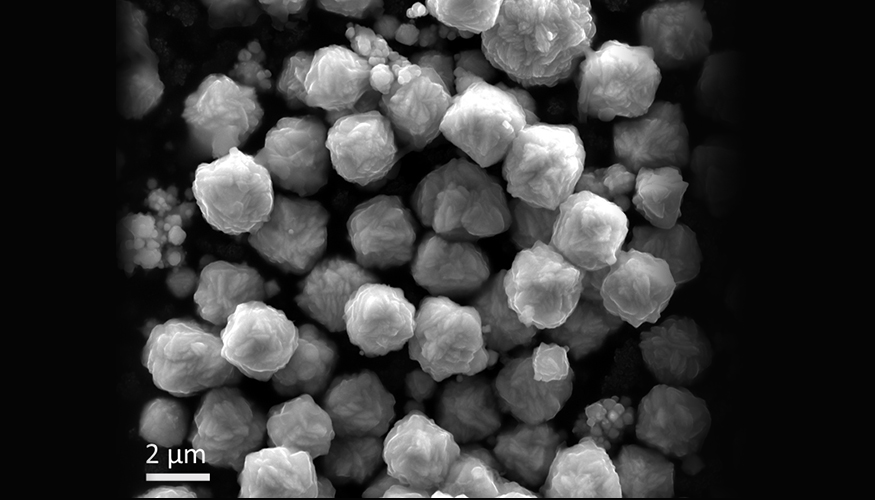
Exacerbated by the overuse of antibiotics in human and livestock, antibiotic resistant bacteria have resulted in increased mortality and financial strain on society. Certain naturally occurring clays have been shown to have antimicrobial properties and kill antibiotic resistant bacteria. Harnessing the activity of compounds within these clays that harbor antibiotic properties offers new therapeutic opportunities for fighting the potentially devastating effects of the post antibiotic era. A team of LLNL researchers have successfully produced fully synthetic versions of antibacterial minerals, while controlling the purity and reactivity of the compounds. Utilizing hydrothermal reactors, the team has developed protocols to synthesize chemically pure materials that mimic the physical and chemical properties of natural samples.
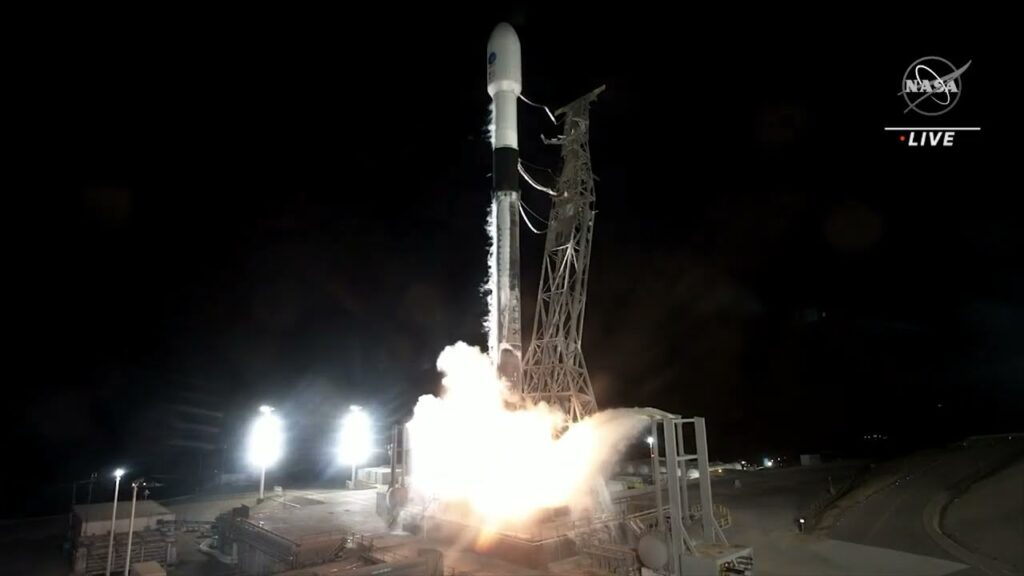
NASA JPL, as part of an international collaboration, recently launched a satellite that will help scientists around the world better understand Earth’s water resources. Designed to make the first-ever global survey of Earth’s surface water, the Surface Water and Ocean Topography, or SWOT, satellite will collect detailed measurements of how water bodies on Earth change over time. The satellite will survey at least 90% of the globe, studying Earth’s lakes, river, reservoirs, and oceans at least once every 21 days to improve ocean circulation models and climate predictions, and to aid in freshwater management around the world.
Building Resilient Infrastructure
Use of hydrogen fuel cells can help industries decarbonize and keep the electric grid resilient during periods of low renewable energy production. Berkeley Lab co-leads the U.S. Department of Energy's Million Mile Fuel Cell Truck Consortium, aimed at developing rugged fuel cells that can power long-haul trucks a million miles, and is a leading lab in developing technologies to lower the cost of electrolysis. Berkeley Lab’s geosciences division is also assessing options for underground storage of hydrogen. Through support for California’s ARCHES consortium, the Lab is working with the Governor’s Office and the University of California to compete for a $1.25 billion federal grant to accelerate the use of green hydrogen for heavy-duty transportation and other hard-to-electrify sectors.
Lawrence Livermore National Laboratory partners with city of Livermore to reduce carbon emissions
Lawrence Livermore National Laboratory (LLNL) has signed a memorandum of understanding (MOU) with the city of Livermore to collaborate on advancing climate action in Livermore and build community-wide resilience to climate change impacts. The city’s Climate Action Plan (CAP), anticipated to be adopted by the Livermore City Council this summer, will create a roadmap to achieve carbon neutrality (also known as net-zero emissions) by 2045. The CAP also will include adaptation and resiliency strategies to prepare Livermore for a changing climate.
The city is developing strategies to be consistent with state climate mitigation targets and new legislation that requires cities to plan for the impacts of climate change. The goal of the MOU is to present opportunities for collaboration toward advancing climate action in the community of Livermore and beyond. Last year, city officials met with LLNL representatives to discuss cooperating to demonstrate climate technologies at various sites and explore other potential collaborations and funding sources.
LLNL researchers proposed three climate technologies that could be demonstrated at several locations within the city. The first, biogas utilization, focuses on carbon removal from biomass and could be piloted at the sewage plant on the north side of Livermore. The second technology, known as “carbon farming,” functions by increasing decomposing plant material and microbes in soil; in urbanized areas like Livermore, improving the soil in this way can improve carbon uptake. Finally, creating localized, autonomous power microgrids can help assure electricity remains online during wider outages.
LLNL scientists and collaborators have developed a broad suite of multiscale simulation capabilities to help identify, assess, and overcome microstructural impacts on ion transport in solid electrolytes. Through new research, the team gained a better understanding of the detailed relationship between microstructure and ionic transport properties. Exploring ion transport can help resolve long-standing debates about the importance of microstructure in solid electrolytes. This knowledge is critical to create viable solid electrolyte materials that retain high ionic conductivity.
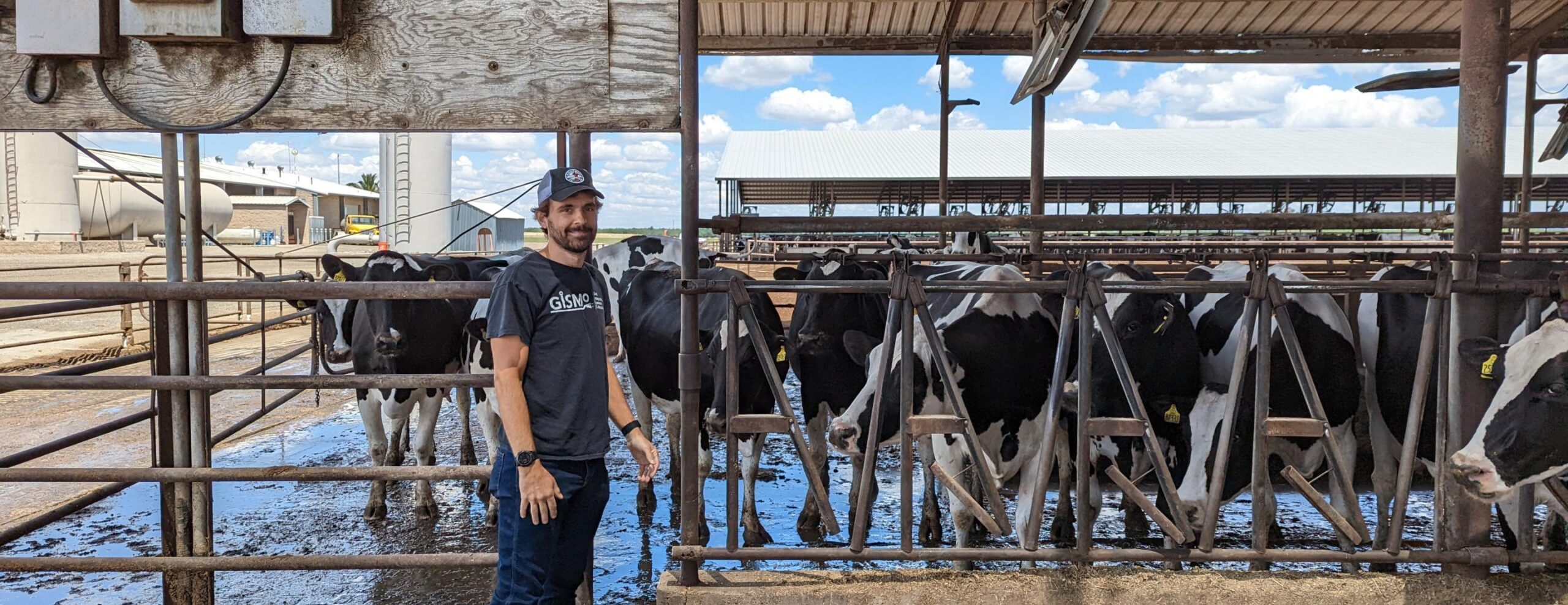
SLAC National Accelerator Laboratory building resilient—and cool—farms in Central California
Four years ago, Gustavo Cezar’s team with SLAC’s GISMo lab—which stands for Grid Integration, Systems and Mobility—installed smart fans, solar panels, batteries, electricity meters, and weather sensors at a Central California farm. Together they help to keep the animals cool inside the barn and minimize the farm owner’s electricity costs, specifically by collecting real-time data, such as from the temperature sensors and the local electricity rates. The system then optimizes the operation of the fans and batteries to ensure the fans run when needed and at the lowest possible cost—an approach that has saved the farmer thousands of dollars each month.
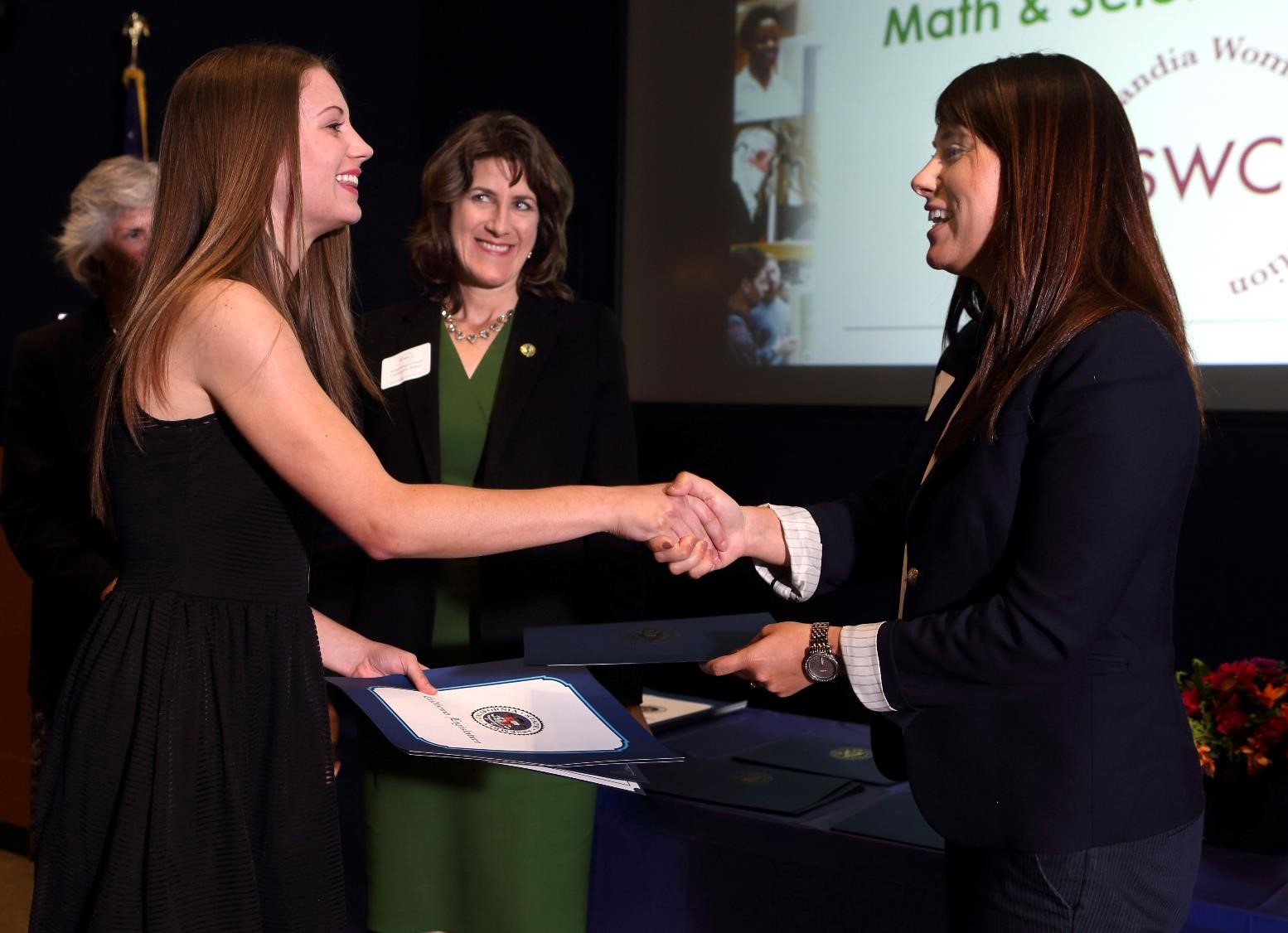
Sandia National Laboratories Celebrating Young Women in STEM
The Sandia Women’s Connection hosted the 30th annual Math and Science Awards. The Labs honored 38 female students from high schools in and around the Livermore Valley. Honorees are nominated by their teachers and awarded for their achievements in either math or science. The transition between high school and college is a critical point for young women as they decide whether to pursue STEM careers. One contributing factor for girls who turn away from STEM is thought to be a lack of female mentors in scientific fields. SWC hopes the awards will inspire juniors to both study STEM majors in college and connect with women at Sandia who can advise and encourage them in those fields.
Responding to Ongoing Disasters
SLAC’s Grid Integration, Systems, and Mobility (GISMo) lab explores the intersection of the power grid, building and ambient intelligence, and human mobility. Building upon the lab’s efforts to integrate and utilize large amounts of energy data, the Grid Resilience and Intelligence Project uses artificial intelligence and machine learning to identify vulnerabilities in the grid and build capabilities to anticipate and recover from grid events.
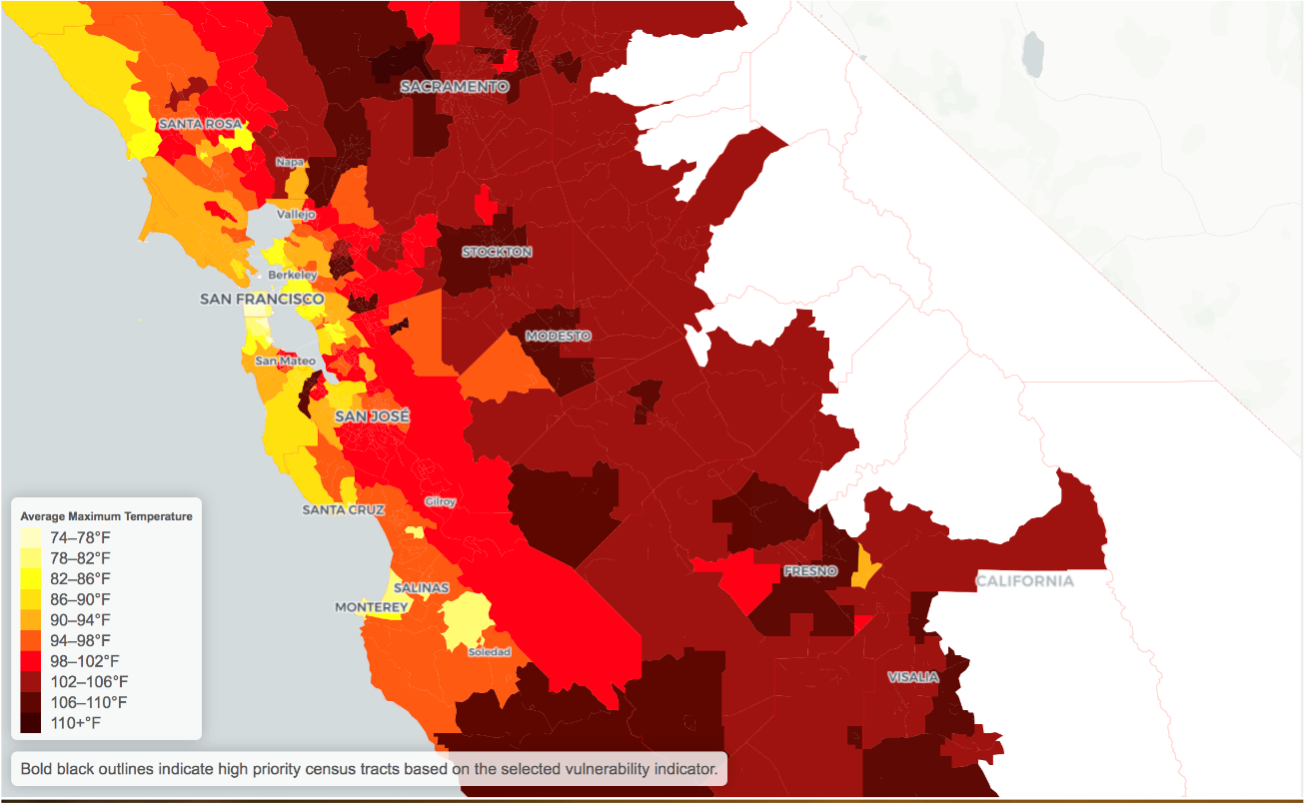
Berkeley Lab Protecting Vulnerable Fresno Neighborhoods from Extreme Heat
Disadvantaged communities bear a great climate and pollution burden, with extreme heat in particular growing in severity, duration, and frequency. Residents of these communities are often among the least prepared to cope with heat waves. A team of Berkeley Lab researchers worked closely with two local community-based organizations in the Fresno area (West Fresno Family Resource Center and Every Neighborhood Partnership) as well as several other local stakeholders to complete two projects focused on advancing climate equity and heat and resilience in several disadvantaged neighborhoods in Fresno, a city with poor air quality that is historically underserved and with most homes built prior to 1980.
Berkeley Lab performed (1) neighborhood-scale modeling results for 17 active and cooling measures to better cope with extreme heat in Fresno; and (2) modeling of integrated packages including energy efficiency measures, electrified space and water heating, solar PV, and electric vehicles in residential sector single family homes. Both projects employed extensive community outreach to better focus research modeling and prioritize measures. Both projects also utilize the CityBES modeling platform for community-scale modeling of residential sector upgrades to improve resilience to extreme heat and to lower CO2 emissions, and the methodology from these two studies can be applied to other disadvantaged communities. For the heat resilience project ("Cal-THRIVES"), performed for the Strategic Growth Council, Berkeley Lab developed a cooling toolkit that comprised community cooling guides, technology fact sheets, a heat vulnerability index tool, and policy and program recommendations. The toolkit is available online at Cal-THRIVES.lbl.gov.
Collecting and responding to community feedback was a key part of both projects to help understand how residents cope with extreme heat; to better understand resident needs, preferences, barriers to proposed cooling strategies and how they view community cooling centers; and to inform our modeling assumptions on baseline equipment. Outreach methods included community meetings; focus groups, in-home interviews, and phone interviews. Lab researchers found that most residents (60-70%) are not comfortable in their homes in hot or cold weather very often. This is an area to improve equity and provide better indoor comfort and safety during the summer and winter without increasing energy bills. Residents that lack air conditioning units (about 15% of homes) are especially vulnerable to extreme heat.
Among passive cooling measures, window films, roof/ceiling insulation, and cool walls are the among the most effective passive measures overall. Natural ventilation on top floors is very helpful as well (opening windows at night to admit cooler air) but may be limited if outdoor air quality is poor. For active cooling measures, fans improve comfort and can reduce electricity bills; while homes with evaporative coolers only (aka swamp coolers) greatly benefit from getting air conditioners.
Rebuilding with Resilience
SLAC scientists and their collaborators at Stanford and around the world are developing ways to transform carbon dioxide into something more useful. In one project, scientists at SLAC and Stanford made a new catalyst that works with either heat or electricity. Their work aims to bridge these two approaches to spur chemical reactions with the goal of discovering more efficient and sustainable ways to convert carbon dioxide into useful products. Meanwhile, an international team of scientists used advanced X-ray sources at SLAC and Argonne National Laboratory to discover how a soil microbe could rev up artificial photosynthesis. Their results, which showed a bacterial enzyme converts carbon dioxide into other compounds 20 times faster than plant counterparts, could further efforts to turn carbon dioxide into fuels, fertilizers, antibiotics and more.
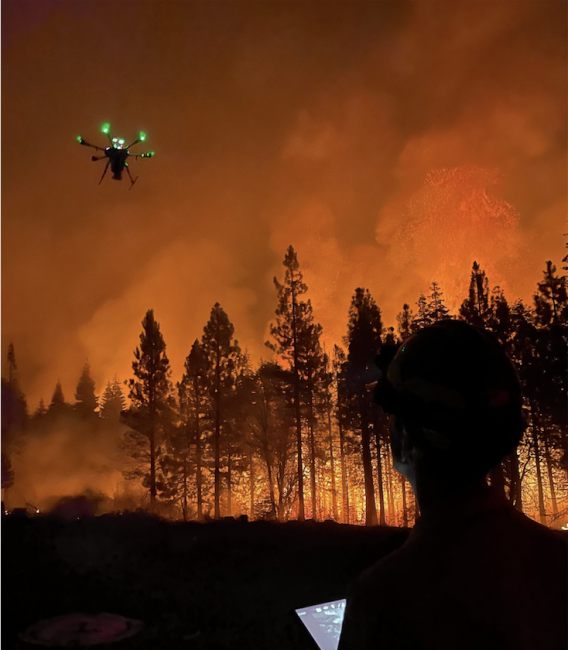
NASA Ames – Fighting Fire with Drones
The Scalable Traffic Management for Emergency Response Operations, or STEReO, team at NASA Ames, led by principal investigator Joey Mercer, is designing software and communication tools to help disaster responders work more safely and efficiently. Part of their approach is to scale up the use of unmanned aircraft systems, or UAS, also called drones.
Drones are good for capturing thermal images of the landscape below. The heat signatures obtained can help determine where firefighters should establish fire-containment lines dug either by bulldozer or by hand. “The smarter we are about their operations, the smarter capabilities we can create,” said Mercer. “They’re running operations at night. They don’t know what terrain they’ll encounter, or where they can launch their aircraft from. There are so many details about their working environment that are hard to capture in conversation or get lost in translation.”
To help make their tools as useful as possible, Mercer and members of his team join wildland firefighters in the real-world setting of active wildfires. Between the Dixie, Caldor, McCash, and Windy fires, scattered across the state, but concentrated in Northern California, they shadowed drone pilots and incident personnel from three different agencies: CAL FIRE, the U.S. Forest Service, and the National Park Service.
On the frontlines of the Dixie fire, a drone was sent to look for any traces of fire down a steep gully. The thermal data it collected helped decide whether crews could safely attempt to hold the fire there, or if they should work from the next ridgeline, even if it meant losing more acres to the flames.
The location of nearby piloted aircraft is one example of essential information the STEReO team is working to provide to drone pilots. The challenge of tracking those aircraft is the focus of STEReO’s prototype tool kit for drone pilots.
At the McCash fire, the team deployed the pilot kit for the first time during an active incident. This was an important opportunity, both for the team to test their technology in a true operational setting, and for the firefighters to see it at work. That context easily and efficiently revealed how the tools could be improved in the next round with certain tweaks.
Drone pilots remain fairly rare at wildfire response operations, while the fire community works with partners like STEReO to find the safest, most efficient ways to take advantage of their unique contributions. As California’s fire season burns on, the NASA team will continue its observations in the field, learning from the firefighting experts how STEReO’s tools could help them most.
Continue Reading
Learn more about the economic impacts of each of California's federal labs and research centers, as well as their collective impact to the state. Discover impacts to their region and California, as well as resources, expertise, and success stories from each lab.

